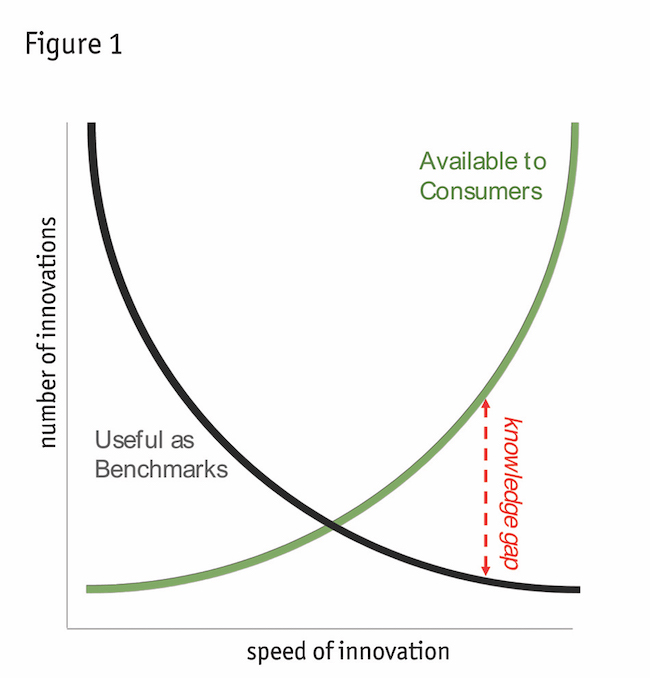Beat the clock
Editor's note: Lincoln Merrihew is global head, brand and marketing at Pulse Labs. He can be reached at lincoln.merrihew@pulselabs.ai.
Until robots rule the world, people can enjoy the rapidly evolving ability to integrate with all the machines and technology around us. That integration is designed to make our lives better and easier. Well, that’s the intent: everyone has experienced the gaps between design intent and the successful execution of design. And with technology, design refers not only to the look and feel but the functional aspects as well: the menus, the screens, the graphics, the ability to accurately process voice commands, the latency of responses and the ability of one technology to effectively communicate with another.
The good news is that modern technology can often be enhanced quickly, such as via over-the-air updates in vehicle telematics and updates to cellphone apps and operating systems. Yet that’s also the bad news. That speed means that marketers and others may rush technology to market to appear innovative before things are fully ready. And that means that technology may be launched when only 80 percent ready – or less. (Some of those companies believe that’s OK because the remaining 20 percent can be added later.) Together that means consumers experience partially baked solutions, which is good for neither brand nor customer.
The results of these shortcomings vary widely, from dissatisfaction to frustration to even danger. Our firm’s testing has revealed instances when, for example, a driver was unable to disengage speed control in a vehicle locked at 25 mph when the posted speed was 40 mph. The driver tried voice commands and screen touches. At one point, when the driver said, “Increase speed,” the vehicle responded by increasing the speed of the fan.
Then there’s the ancillary fallout on marketing researchers. Rapidly developed technology means less time to complete quality research, including human machine interface (HMI) research – never mind the impact and implications of things being half-baked. We see that pain across several of our business partners and have deemed it “research compression”– a drastic shrinking in the amount of time available to make crucial decisions.
Imagine having to wait months for customer research and by the time you have it in your hands and have processed it for insights, the technology in question has already been updated. Or even replaced. You’re looking at results for Version 21 and yet consumers are now working with Version 35. Or maybe there’s a Version 36 that was released without notice. And the speed of releases also means the competitive landscape changes every minute.
Layered on top of that is the lack of benchmarks in many cases: some technology is so new there are no viable comparisons or points of reference, meaning historical data and insights do not apply. If fact, the applicability of benchmarks is inversely proportional to what’s available to customers. As the speed of innovation increases, there are more choices for consumers and at the same time fewer relevant benchmarks. They’re inversely proportional (Figure 1), resulting in an ever-larger HMI knowledge gap. The combination of research compression and a growing HMI knowledge gap can lead to embarrassing and tragic results that can destroy brand equity in much less time than it takes to create. For example, based on technical specs and user needs also, a coffeemaker might seem perfect for making soup. Consumer research would show otherwise.
The combination of research compression and a growing HMI knowledge gap can lead to embarrassing and tragic results that can destroy brand equity in much less time than it takes to create. For example, based on technical specs and user needs also, a coffeemaker might seem perfect for making soup. Consumer research would show otherwise.
Everyone wins
The science that informs the interaction between people and machines is called human factors analysis. The by-product of research compression and the HMI knowledge gap is that there is not enough “human” in human factors analysis. Fortunately, that same rapid advance of technology can shift that balance by putting more technology into research. When done successfully, everyone wins: consumers, brands and researchers.
There are three core facets of research technology to ensure relevance around gathering, processing and accessing: gathering the data quickly in time for it to be relevant; processing the data to yield digestible and focused insights; and ensuring rapid and broad access to the insights.
The need to gather data quickly by definition eliminates many of the stalwart data-capture techniques. You need results in weeks, not months. Processing the data is crucial. A massive data dump, even if gathered quickly, is not helpful because you can’t find the most relevant conclusions. Broad access is equally important: even if gathered quickly and digested to insights, if decision makers can’t get quick access, then once again they’re not very helpful. Think of a fire engine that races to a burning building but then no one can find the hoses.
Blend of missions
To make the discussion more real, we’ll focus on one of the most dynamic industries: automotive. Not only is technology there evolving exceptionally quickly, there’s also a blend of technology missions working, ideally, in tandem (safety, infotainment, navigation, etc.) and a blend of inputs (driver voice, physical touch controls, cameras, exterior sensing, etc.). We’re already seeing the evolution from hardware to software, offline to connected and static to real-time. And eventually drivers will become riders thanks to autonomous vehicles.
Human factors analysis is more than just about satisfaction and ease of use. It’s also often about safety, particularly for vehicles. With drivers being bombarded with technology, it’s like being in a room with 10 people talking to you at once. And that can lead to distraction. You say something to your car like “Call Helen” and your vehicle replies by charting a course to Helena, Montana. (Don’t laugh, we’ve seen such things in real-world driving research.)
The problem is that such an interaction can cause drivers to take their eyes off the road as they look at the screen. That’s a distraction, which can lead to trouble. In fact, a recent Pulse Labs review of National Highway Traffic Safety Administration complaints over the past 30 months found that 5% mention NAV or SCREEN.
Helping spur this bombardment of drivers is the automotive industry’s increasing reliance on other industries to power the customer cabin experience. First it was computers, then voice assistants and very, very soon the gaming industry. Case in point: Epic Games is partnering with Volvo to design Volvo driver interfaces.1 Another fitting example of the lack of benchmarks: there are few, if any, studies on the success of gaming interfaces in real-world vehicle environments.
Which brings us back to how technology can be applied to help get more “human” into human factors analyses. How can traditional research such as surveys and focus groups keep pace? How might you ask in a survey how a customer feels about a specific set of menu steps in an interface or how responsive an infotainment system is to your voice’s commands? Or with gaming (since those interfaces are coming to cars), to what extent could you rely on a survey to capture a glitch accurately and completely in a gaming console? Or a game console in a car? Those are the two key words – accurately and completely – that HMI-related insights require to be useful.
Not that surveys don’t have their place. They do, including for things like choice modeling and willingness to pay.
Paint a picture
One solution is using cameras to capture how people and technology interact. And that video needs to include voice and user annotations of what they were feeling and what would help make things better. Visual, audio and customer feedback together can paint a picture that yields unrivaled insights. The need for accuracy and completeness is where this multimodal approach to HMI comes into play. As a picture is worth 1,000 words, ergo a video is worth 1,000 surveys.
Camera-centric research also speeds decision-making for one particularly important reason: with traditional flat research, the findings are often subject to interpretation. For example, if a survey respondent reports that an infotainment interface was “difficult to use,” whoever is processing that information will have to interpret what that means and what actions should be taken. And with research compression at hand, we can’t afford one of those actions to be “do more research.”
With video and voice, you can see and hear the driver struggling or being delighted. You can hear what they’re trying to do and how the system responds. You can see the tactics drivers employ to make the technology work for them. And you can see when the system works against them (e.g., Helena, Montana). All that means that the time needed to interpret results is reduced to the time it takes to watch the video.
Well, almost. Remember our tenets above. The data need to be captured quickly. And for that our firm uses portable in-car cameras. It’s the useful insights where traditional video-centric research often falls short. That’s typically because crude video research is just sticking a camera in a car and waiting for something interesting to happen. So as a customer of the research, you get a terabyte file of video data and you’re left to find the needle in a haystack.
Or worse, it’s not even real drivers in real vehicles. It’s employees of the brand in question doing a cursory check of things. The fox guarding the henhouse, as it were. Or it’s streams of video selfies with no structure to the data or ways to ensure quality and representativeness.
It’s here where the model used for survey research is useful. You don’t send a respondent and blank piece of paper and instruct, “Write down everything you know about Topic X.” Instead, you send specific questions to pre-categorize the results and make them more actionable. And a brand doesn’t survey its own employees.
We work with our clients to identify key business needs or questions, then focus our video-capture around those needs. That pre-categorizes the results, which is designed to increase actionability. We do the work under natural conditions with real drivers in real cars under real situations. Those data are then AI-processed to further focus the insights.
The bottom line is that nobody wants a bad interface. No brand wants a bad customer experience. No consumer wants a frustrating relationship with technology. I’ve been involved in research innovation for decades and been stunned by the overall lack of speed.
Today, better and faster research technology can compensate for research compression and help close the HMI knowledge gap, when abiding by the three tenets of speed, focused insights and fast and easy access. Now it’s up to the combination of brands and researchers to evolve as fast as technology and consumer expectations have.
References
